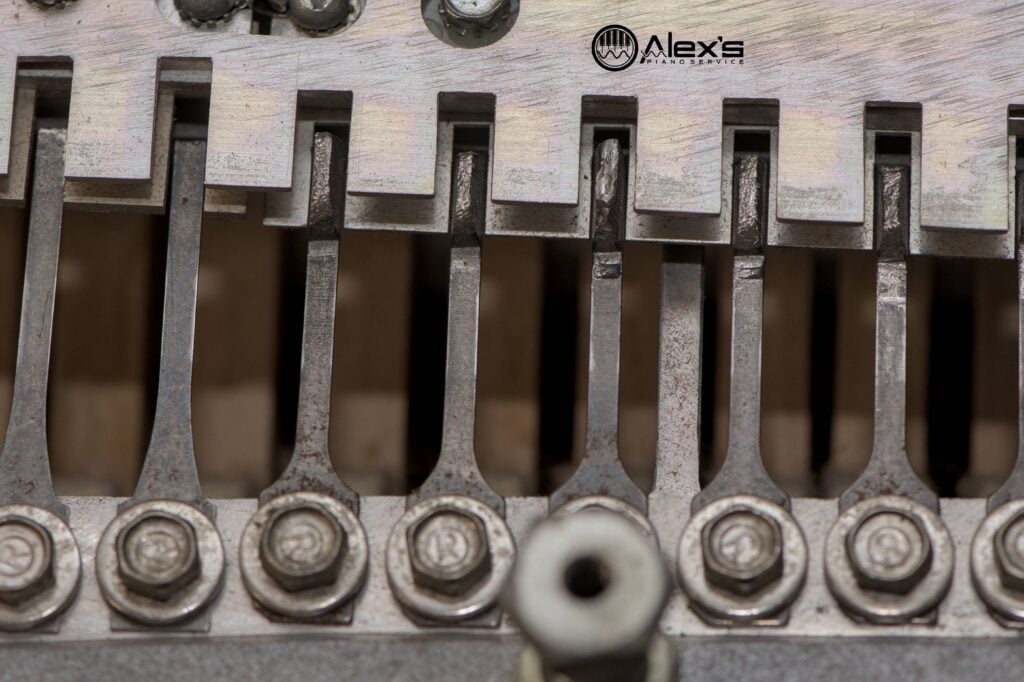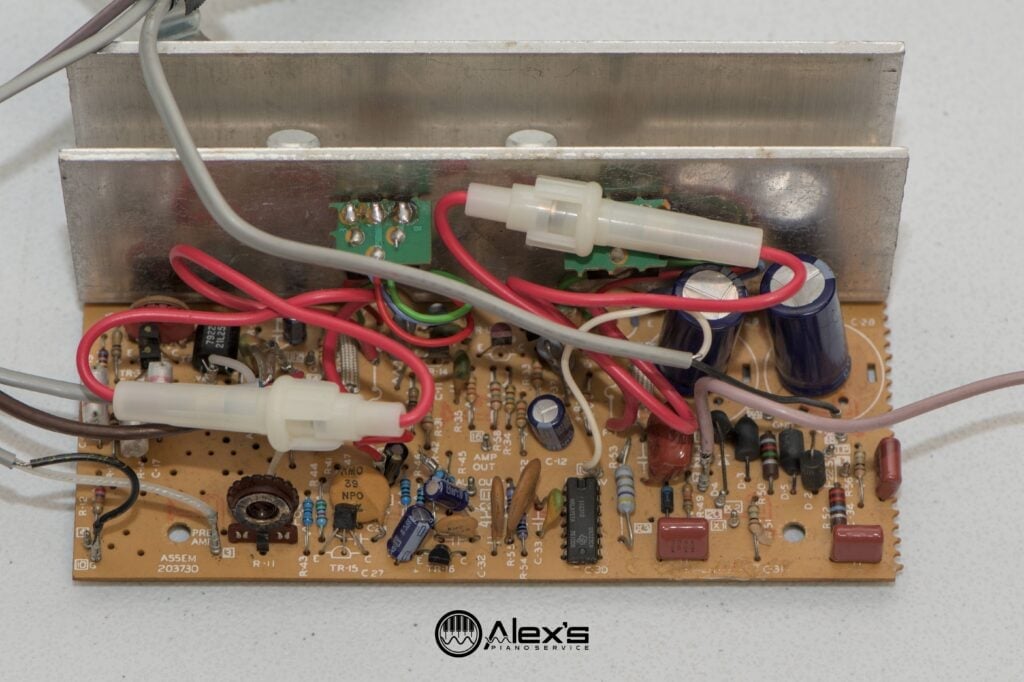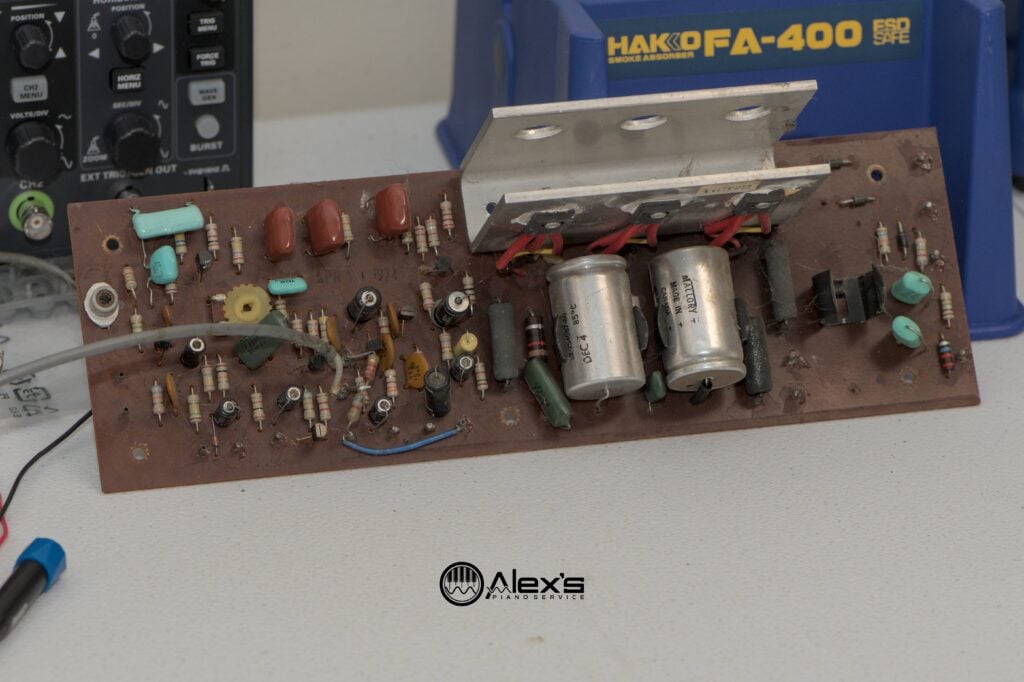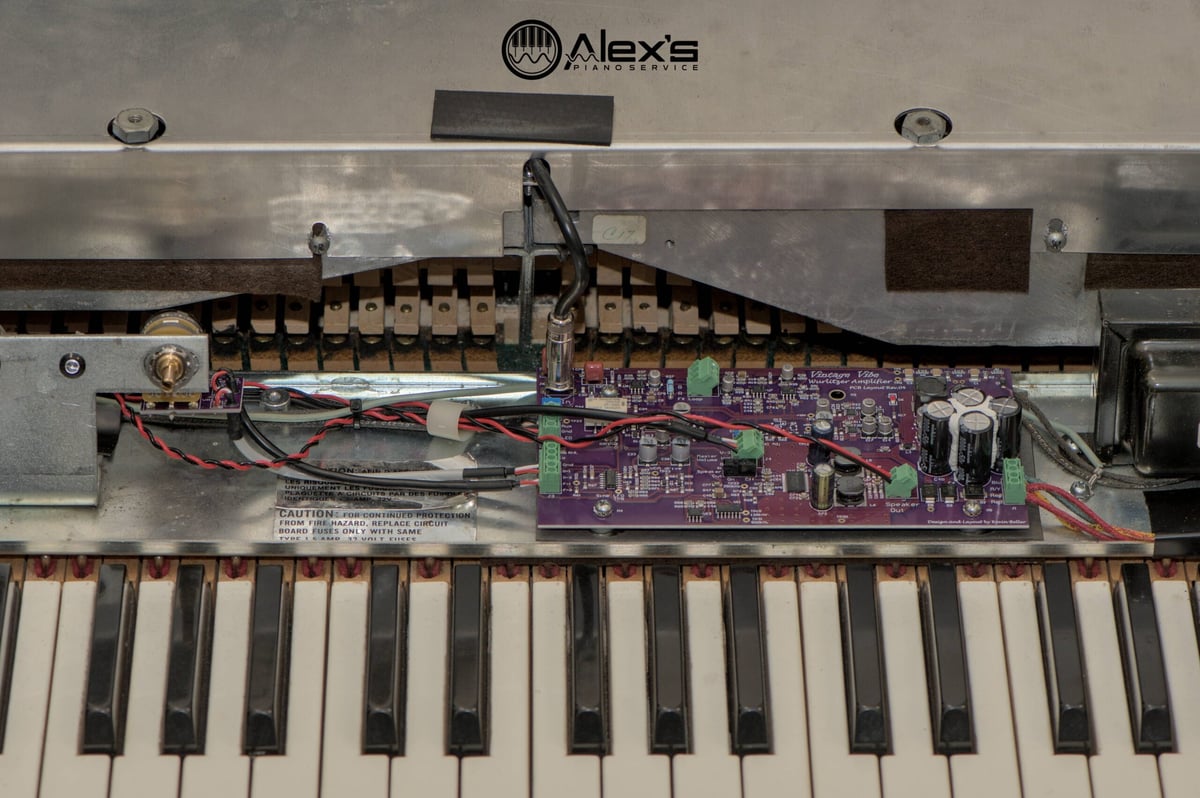I recently had a customer reach out to me with a dead Wurlitzer 200A. It produced no sound. Upon inspection, the main fuse was blown. After replacing it, we heard that the amplifier was very noisy. We opted to replace the amplifier with a new one from Vintage Vibe. It’s quite likely the fuse blew because of significant faults with the original amplifier.
I also tuned and regulated the Wurlitzer. Tuning the Wurlitzer is accomplished through adding or removing solder from the ends of the metal reeds which are struck by the hammers. Adding solder lowers pitch, whereas carefully filing the solder raises it. It’s very important to keep the solder pyramid centered and symmetrical to avoid tonal/strike issues.

The amplifier replacement itself is relatively straightforward. The Vintage Vibe design is simple, clearly labeled, and the use of terminals minimizes soldering. Overall, this is a replacement that many people would feel comfortable doing themselves. They also include very thorough instructions.

The Wurlitzer 200A has many small differences from the Wurlitzer 200, including the positions of the speakers and a pot controlling the auxiliary output volume. On the Wurlitzer 200A, the speakers are mounted to the lid, whereas in the Wurlitzer 200 they’re mounted directly to the same rail as the amplifier.

